FC Barcelona’s summer hasn’t been the best this year.
Messi’s departure from PSG and the lack of massive signings have left the club in a delicate situation in which lots of players will be expected to step up and show their worth in La Liga.
However, the preseason had some positives, too.
One of them was the minutes Pablo Martín Páez Gavira, known as ‘Gavi’, enjoyed with the first team.
The 2004-born midfielder is one of the most exciting players to come out of La Masía in recent years, and he has already convinced Koeman to join the first team.
In this tactical analysis, we’ll see how he influences Barça’s tactics and why he has been tipped to lead the club in the following years.
Who Is Gavi?
Gavi is a right-footed central midfielder who stands at just 173 cm / 5’8’’ and possesses excellent agility, stamina and work rate.
He’s quick, even if it isn’t his best attribute, and he can cover long distances with excellent stamina and intensity.
Always playing as one of the two central midfielders in Barcelona’s classical 4-3-3, Gavi has the technical conditions to be the one in charge of progressing from the back and also creating in the final third.
His 6 goals in 23 games with Barcelona U19 last season show he’s a threat in the final third.
As expected from any player coming from La Masía, Gavi is technically excellent and very well-educated.
Even among older players who are physically and technically superior to him, he stands out for his understanding of the game and the principles of Barcelona’s positional play.
This explains why he needed almost no experience in the B side to start playing with the first team.
In the following sections of this scout report, we’ll have a look at Gavi’s best attributes and some areas he could improve.
As a 2004-born player, he has plenty of time to adapt and become a regular in La Liga.
Gavi Style Of Play – Excellent understanding of positional play
As part of La Masía, since he was 14, Gavi has reached a top knowledge of Barcelona’s playing philosophy, ‘Juego de Posición’ or Positional Play.
For this playing style to be influential, certain positions on the pitch at different heights and widths should always be occupied, so players help the team using their positioning to generate spaces and numerical advantages.
Gavi understands this very well and combines it with excellent dynamism.
He quickly occupies the positions left by his teammates, ensuring the team’s shape is always good and that all the key positions are covered.
To do this, Gavi appears in different zones of the pitch, adapting to the movements of his teammates and keeping excellent focus and work rate to quickly understand which positions have been left unoccupied and get into them.
With this dynamism, it isn’t strange to see Gavi start the plays as a full-back in the build-up, move to a central deep position as the play progresses, appear between the lines and end the attacks in the final third.
he has the technical qualities needed at each of those positions and, more importantly, knows what to do in each phase of the game.
The fact that some positions need to be occupied doesn’t mean that the same players always need to be there, so Gavi’s movement also provides freedom to his teammates.
Those who aren’t 100% used to positional play, like Griezmann, De Jong, or Memphis Depay, benefit a lot from being able to leave their assigned positions and get on the ball more often, while Gavi balances the team.
Let’s see some examples of Gavi occupying different positions in attack and moving to ensure the team’s shape is correct and beneficial for everyone.
In the picture below, we see Gavi getting deep and wide during the build-up as the right-back moves forward to provide depth higher up the pitch, forming a back-three and giving the full-backs the freedom to push forward.
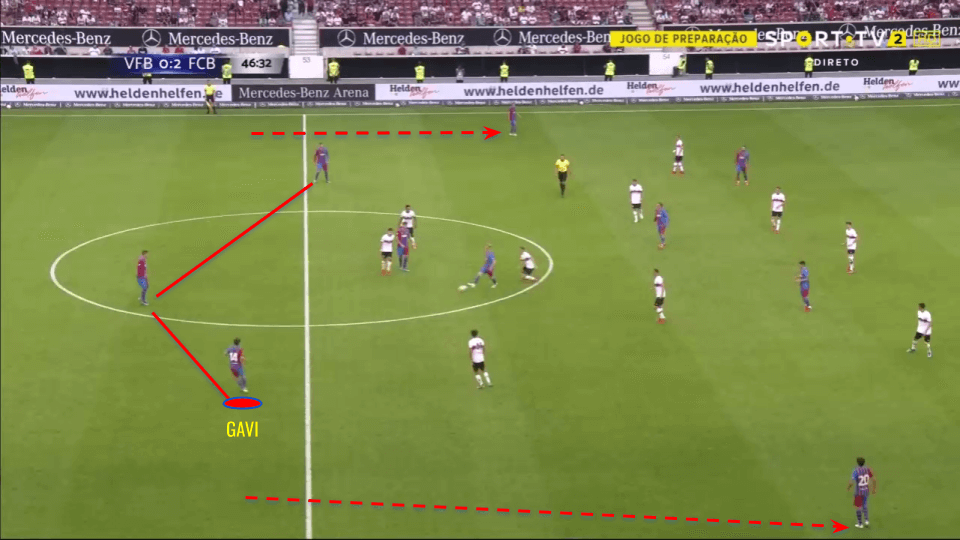
When the theoretically deepest midfielder leaves his position, Gavi quickly reacts to fill it, making sure there’s always a safe passing option in the centre.
We see this in the example below.
As Nico González (on the ball), the defensive midfielder leaves his position.
With De Jong positioned between the lines, Gavi gets into the central circle and makes sure everything is balanced, and every important position is occupied.
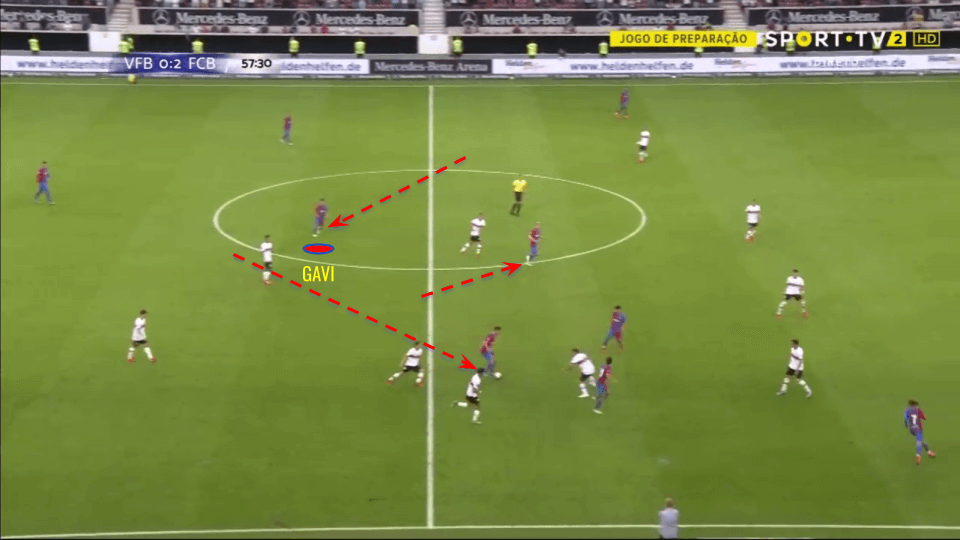
As he adapts and gets deep, he’s also good at getting between the lines and providing passing options.
Technically gifted and more offensive than defensive-minded, Gavi best fits this more advanced positioning, even though he can adapt and move around the pitch during matches.
In the picture below, we see Gavi about to receive the ball between the lines.
The structure of Barcelona’s midfield three is apparent here, with players occupying different vertical and horizontal zones.
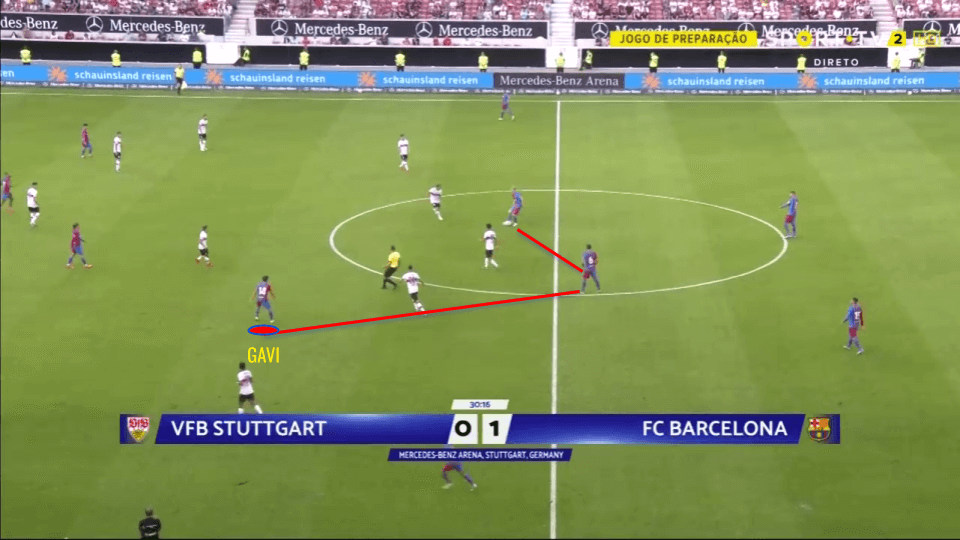
In the examples so far, we’ve only seen Gavi’s initial positioning in Barcelona’s attacks, but this shows that he can assume a variety of functions and roles.
Thanks to his dynamism and positional awareness, we’ll see his positioning change as the attacks progress in the next set of examples.
The sequence below shows that.
Gavi starts the play as the most advanced of the three midfielders and plays the ball forward to the striker, who’s coming deep, showing good vision and the ability to progress.
As the striker comes deep to act as a playmaker, Gavi runs into the box and gets into scoring positions, making sure the team always has someone upfront and in the striker position.
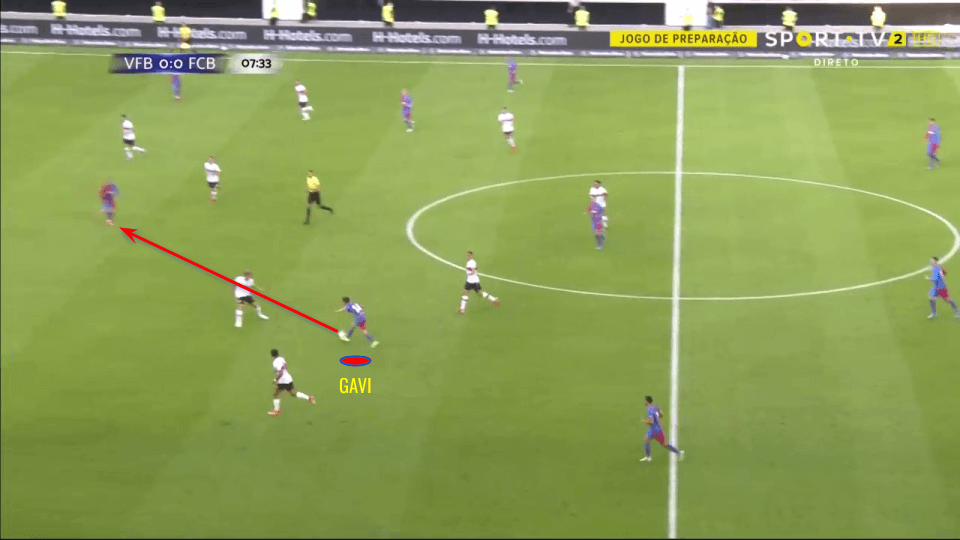
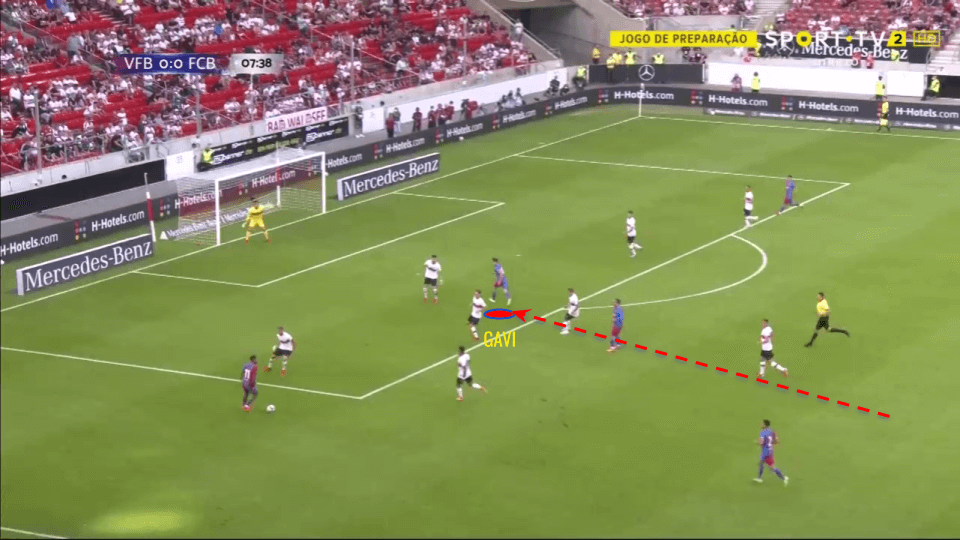
He also makes long efforts to adjust to his teammates’ positioning and maintain a good team shape.
In the sequence below, Gavi starts the play in his half, playing as the first midfielder in front of the defensive one.
With a good pass to the right wing, he accelerates the attack.
As the striker has left his position to come to the second line, he rushes forward and gets into the box.
In the second picture, we see him getting into a great scoring position, but his teammate’s lack of accuracy prevents him from having a clear chance.
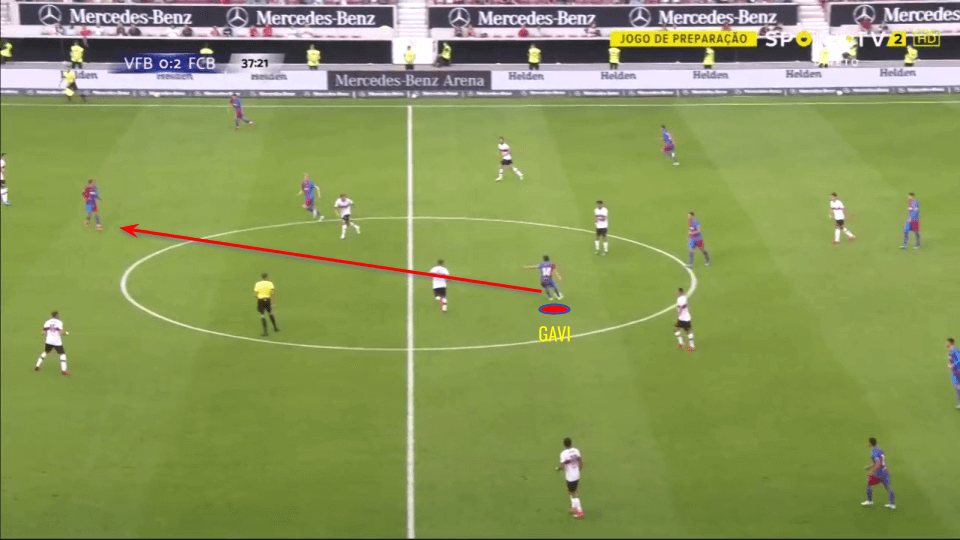
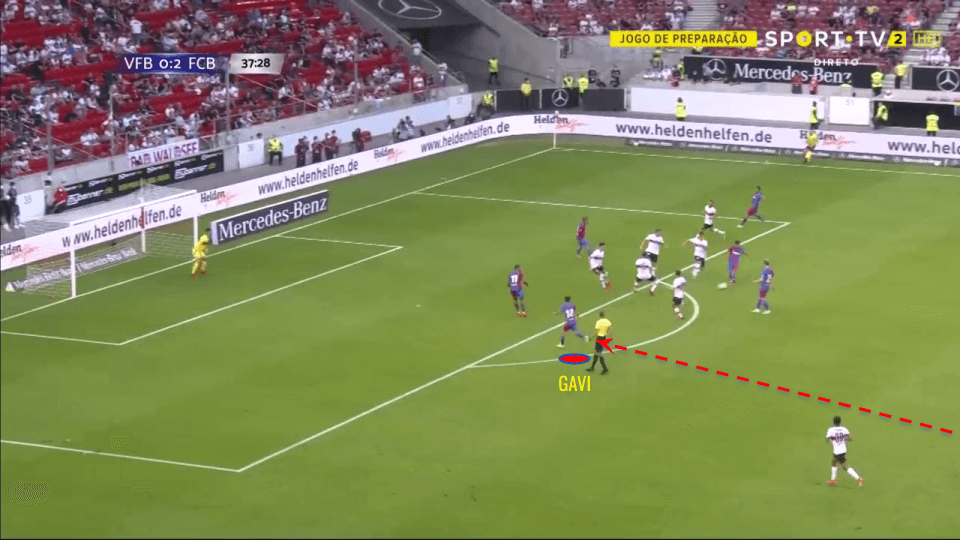
With his technique, dynamism and understanding of the game, Gavi immediately makes an impact every time he steps on the pitch.
In the next section of this analysis, we’ll examine some issues in his passing and his adaptation to a higher-level and quicker game.
Gavi Creativity & risk: adjusting to Senior football
As a midfielder from Barcelona’s academy, Gavi has excellent passing accuracy and values possession highly.
However, he misses some passes that he shouldn’t and has some margin to improve there.
In his matches with the first team, Gavi has averaged 80 passes per 90 with an accuracy of 83%, both excellent figures.
However, 7% of passes he misses aren’t always optimal, and he sometimes gets his teammates into trouble.
As a 17-year-old player, Gavi is used to a slower game tempo and also playing with the best players in terms of technique, so he has always counted on his teammates to get out of pressure and keep possession.
But after reaching the first team, Gavi has kept the same playing style.
Against rivals who press higher and more intensely, he sometimes puts his teammates under pressure.
He likes to play short passes to teammates who are under heavy pressure, expecting them to return the ball to him.
When rivals aren’t pressing too much, this is an excellent way of progressing, but at senior level and against pressing teams, this translates into some unnecessary turnovers that he has to learn to avoid.
Instead of providing specific examples, the map below showing Gavi’s inaccurate passes in his matches with the first team shows a lot.
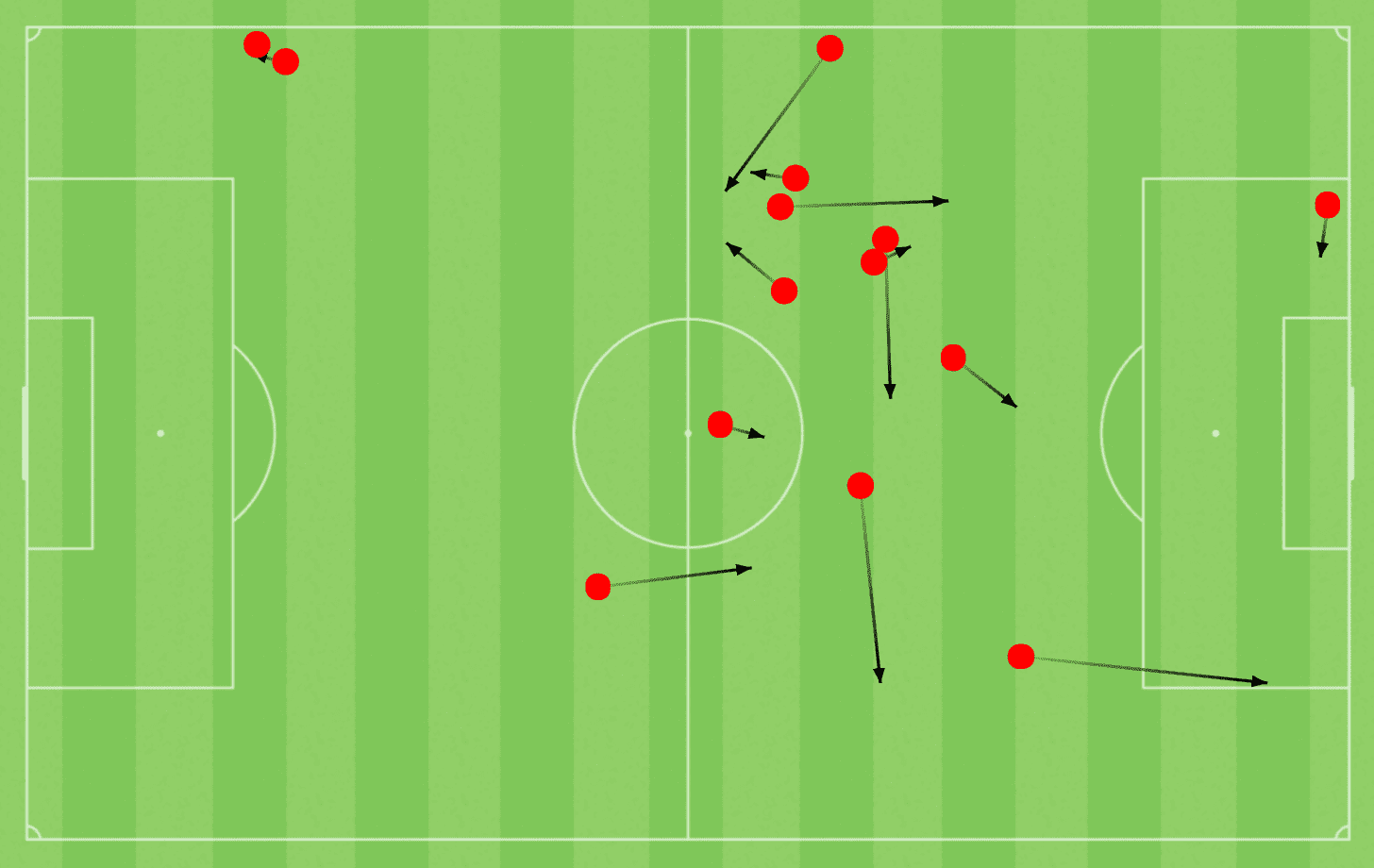
We see most of them are very short passes in the middle third.
In situations like these, Gavi is used to playing one-twos and continuing the play, but at the top level, players aren’t as dominant, and he needs to adjust to that.
Even if it isn’t a huge problem, Gavi needs to improve his passing decisions in short distances while maintaining his creative, progressive, and dynamic style.
In the first team, he has progressed more with his movements than with his passes and still needs the confidence to break lines and really be a creative force in Barcelona’s midfield.
Despite the logical transition Gavi needs to make into top-level football, he does very well on the defensive side of the game.
With 12 defensive challenges per 90 in his games with the first team and winning 64% of them despite his small frame, Gavi again has shown that he fully understands the requirements of Barcelona’s tactics and his role in the team.
Talented and very young, Gavi’s weaknesses are much less than his strengths at the moment.
Additionally, he seems like a player who understands what to do in every situation and who learns fast, as proven by his rapid progress from youth to senior football.
Conclusion
A player with Gavi’s talent and understanding of the game, especially the tactics Barcelona wants to use, is a blessing for the club.
In a new era where the whole squad will need to act together to fill the void Messi
left after leaving for the Ligue 1, Koeman will value having a talented 17-year-old player who can play for the first team.
By no means a perfect player yet, Gavi is undoubtedly one of the players to watch in La Liga this season.
If he manages to emulate what Pedri did last season in terms of playing time and personality on the pitch, Barcelona will have a star for the next decade at least.





Comments